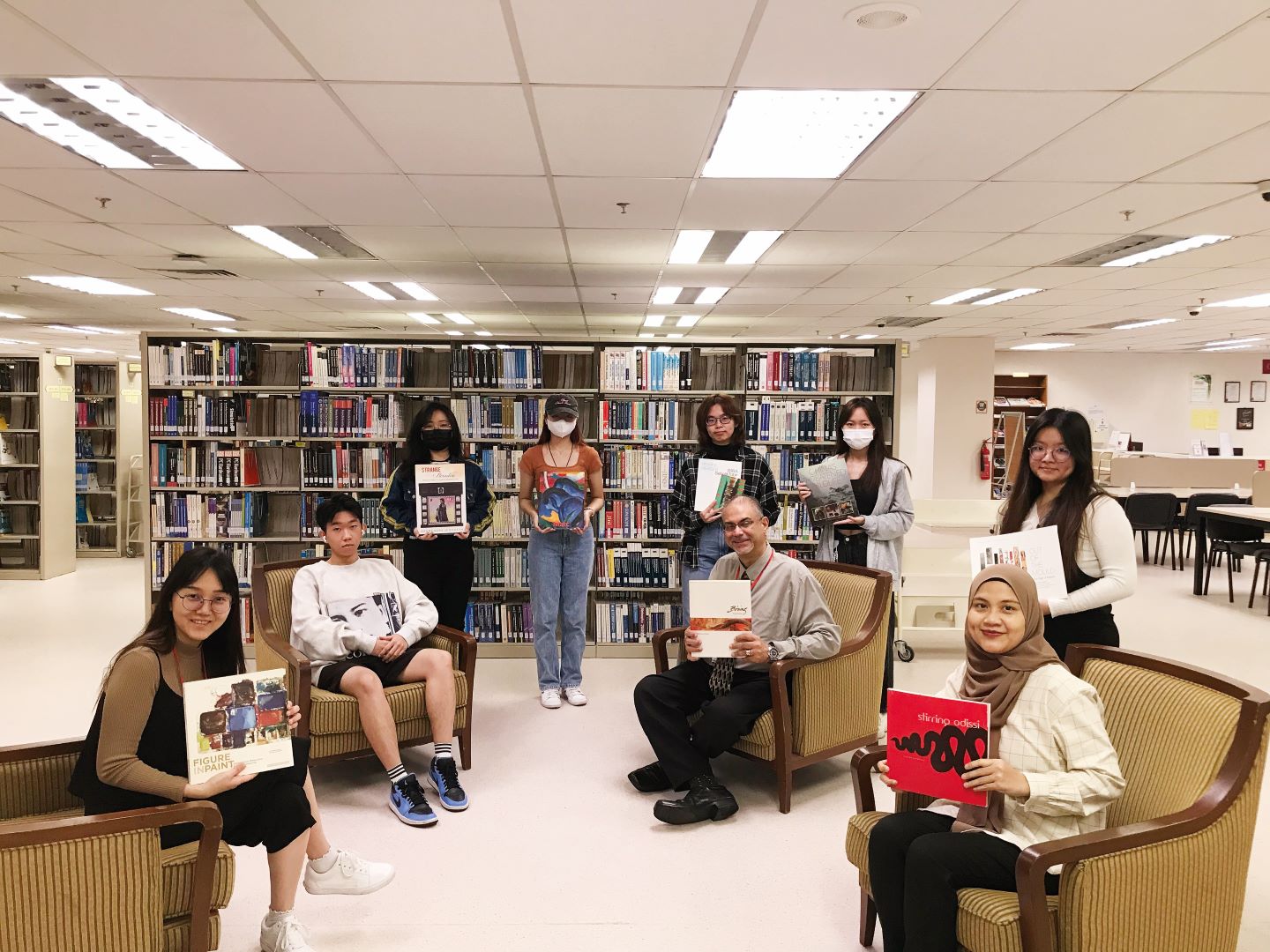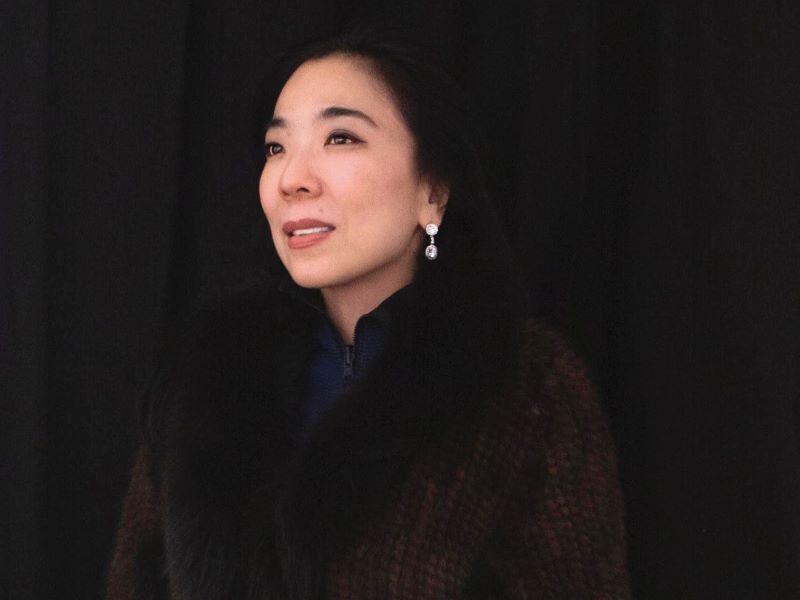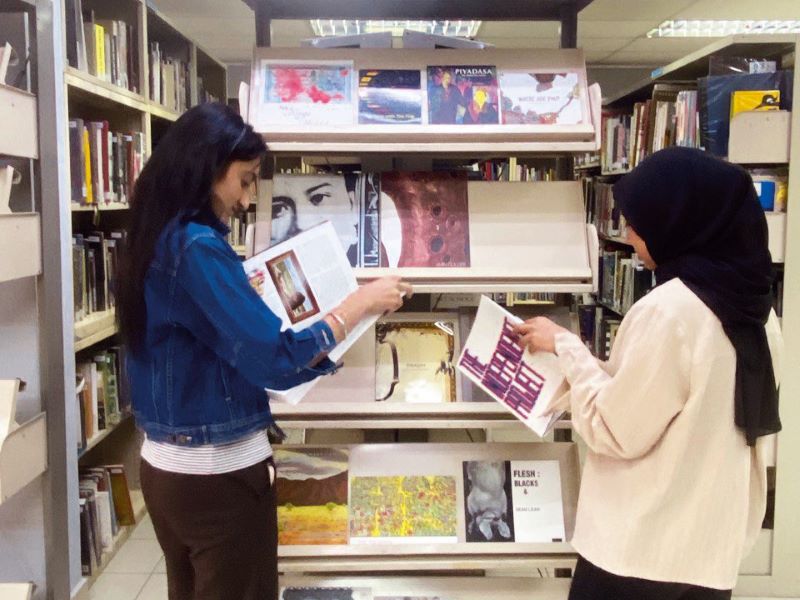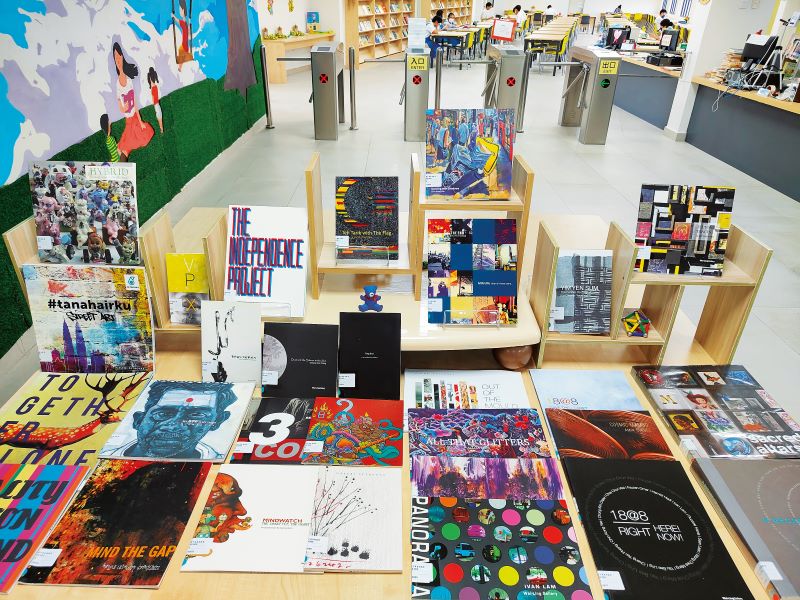
A spokesperson of First City University College says the contribution not only promotes love for the visual arts but also cultivates curiosity, creativity and critical thinking skills among students (All photos: Wei-Ling Gallery)
Books have long been heralded as the gateway to knowledge, opening windows to worlds both real and imagined. Within their pages lie the power to inspire, educate and transform lives by shaping young minds and igniting passions that last a lifetime.
For many, the journey of discovery begins with a single book. Imagine a classroom where a teacher, with reverence and enthusiasm, introduces the vibrant world of art through the pages of a tome. Such was the experience of Lim Wei-Ling, founder of the eponymous art gallery, who vividly recalls the day her secondary school art teacher showed the class a book containing a picture of Pablo Picasso’s revolutionary masterpiece, Les Demoiselles d’Avignon.
Years later, Lim would find herself in New York City’s Museum of Modern Art (MoMA), face to face with the very painting that had captivated her imagination as a student. At that very moment, memories of both teacher and cherished art book came flooding back.
Wei-Ling Gallery recently initiated the 10,000 Book Project, which strived to donate art publications, valued at roughly RM350,000, to national and private schools across Peninsular Malaysia. The inspiration behind the initiative stems from its commitment to nurturing an appreciation and understanding of Malaysian art among young minds.
lim_wei-ling.jpg

“Malaysia is still quite new to the contemporary art scene, and we have been seeing burgeoning interest and growth in this domain. By donating art publications to educational institutions, the gallery aims to provide students and educators with resources to introduce a wide variety of Malaysian art and artists,” Lim explains.
The gallery was established 22 years ago to give local artists a platform.And while it did not set out to publish books, it recognised the importance of archiving the artworks of each exhibition it organises.
“Shows come and go”, she acknowledges, “but documenting each series in these books preserves the contemporary art journey over the last two decades. These books serve as a vital record of the artists’ work and evolution within the contemporary art scene, capturing their responses to events and developments during this period.”
Featuring photographic documentation spanning two decades, along with insightful essays written by professional curators and contributions from various stakeholders, these publications serve as invaluable resources for comprehending the creative and technical journeys of artists and academics alike.
With these books in the gallery’s repository, Lim only wants them to be put to good use, to foster a deeper appreciation for Malaysian art among students and educators, broaden the dissemination of knowledge about local contemporary artists, and nurture a generation that values and celebrates our artistic heritage.
Reflecting on her first visit to MoMA, she says there was something truly special about the moment.
“I believe that if even a few students were to pick up these books, they would recall the artworks and, possibly in the future, encounter them in a museum or come across pieces they might wish to purchase from the artists featured. Books really have the power to inspire people in countless ways.”
students_of_malaysian_institute_of_art_checking_out_the_art_books_donated_by_wei-ling_gallery.jpg

The beneficiaries of the 10,000 Book Project were carefully selected based on their status as national and private schools across Peninsular Malaysia. In addition, their respective libraries and literary departments were contacted to facilitate the process. This selection aimed to ensure a wide reach and impact within the educational landscape of the country.
Handling such a large quantity of books and distributing them to 56 educational institutions was no mean feat, but the gallery managed to secure a partnership with a corporate sponsor — that wishes to remain anonymous — for its connection to and support of the project.
“This partnership, facilitated through established networks, included assistance with logistics. The success in delivering and distributing such a large quantity of books can be attributed to the collaborative efforts of those who share the vision of enhancing art education in Malaysia,” Lim notes gratefully.
To tackle the challenges involved with logistics, coordination and communication, the team employed strategic planning, proactive problem-solving and diligent follow-up measures to ensure the seamless execution of the initiative. From the conception of the idea in November 2022 — which was also meant to commemorate the gallery’s 20th anniversary — to the last shipment in October 2023 to an American international school, Lim can finally exhale, knowing the books have reached their intended destinations. She hopes the students and teachers will make the most of them.
one_of_the_56_recipients_include_chong_hwa_independent_high_school_kuala_lumpur.jpg

Looking ahead, Wei-Ling Gallery plans to continue supporting art education and appreciation in Malaysia through various initiatives. These include the three-month WLG Incubator programme that mentors young artists, the WLG Discussion Lab covering pertinent topics, monthly curated tours and artist talks, podcasts, the Malaysian art series on YouTube featuring individual artists and practices and, more recently, the Wei2inspire Instagram page sharing insider knowledge and inspirational quotes for young artists.
“These initiatives reflect our commitment to nurturing emerging talent, facilitating dialogue within the art community and promoting Malaysian art on diverse platforms. It’s also a great way to get young people involved, as it is fun!”
This article first appeared on Apr 22, 2024 in The Edge Malaysia.


